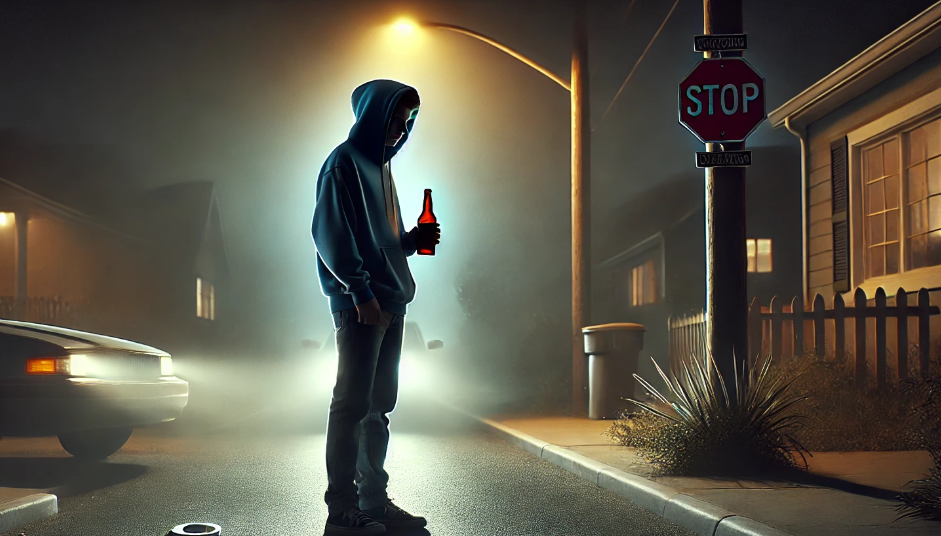National Statistics on Underage Drinking
Underage drinking remains a significant concern across the United States. Alcohol is the most widely used substance among America’s youth, even more common than tobacco or marijuananiaaa.nih.gov. Millions of adolescents consume alcohol each year, though national surveys show encouraging trends in recent decades. Understanding how widespread underage drinking is – and how it’s changing – can help communities grasp the scope of the problem and why prevention efforts are so important.
How Common Is Underage Drinking? By the numbers, alcohol use among teens is still prevalent. In 2023, an estimated 5.6 million youth ages 12 to 20 reported drinking alcohol (beyond just a few sips) in the past monthniaaa.nih.gov. That represents a substantial portion of middle and high school-aged students. About 1 in 4 high school students (23%) drank alcohol within the past 30 days, according to the CDC’s 2021 Youth Risk Behavior Surveycdc.gov. Furthermore, approximately 1 in 6 high schoolers engages in binge drinking (consuming several drinks in a short period)cdc.gov. Even younger teens are trying alcohol; nearly 1 in 5 youth ages 14–15 have had at least one drink in their lifetimeniaaa.nih.gov. These statistics illustrate that underage drinking touches a broad swath of adolescents.
Trends Over Time: The good news is that underage drinking has declined significantly over the past 30 years. In 1991, just over half of U.S. high school students (about 51%) reported current alcohol use. By 2015 that figure dropped to 33%, and it fell further to 23% by 2021cdc.govcdc.gov. Binge drinking has seen a similar decline: roughly 31% of high schoolers were binge drinkers in 1999, compared to 18% in 2015cdc.gov. Experts attribute these improvements to a mix of stricter laws, education, and awareness. Despite this progress, underage drinking remains common – nearly one in four teens is still drinking – so continued vigilance is needed. “Despite progress, current and binge drinking remain common among high school students,” the CDC notes, and many teen drinkers consume alcohol at high intensity (e.g. multiple drinks in a row)cdc.gov. This means today’s youth are less likely to drink than past generations, but those who do drink may be engaging in dangerous patterns.
Why It Matters: Some may ask why underage drinking deserves so much attention, especially if rates are going down. The reality is that alcohol use in adolescence comes with serious risks and costs. Each year, approximately 4,000 Americans under age 21 die from alcohol-related causescdc.gov – including car crashes, alcohol poisonings, and injuries. In 2010 (a year often cited in research), underage drinking cost the U.S. an estimated $24 billion in economic harmcdc.gov, reflecting health care costs, lost work, and other damages. Beyond the numbers are the personal impacts: families and communities suffer when youth experience alcohol-related accidents, violence, or poor health outcomes. Even non-drinkers can be affected indirectly by the behaviors (like aggressive acts or impaired driving) of youth who do drinkniaaa.nih.gov. In short, underage alcohol use isn’t just a private matter – it’s a public health issue that can touch everyone.
Why Prevention Is Key: The statistics make clear that underage drinking is not a trivial or “normal” rite of passage. Most teens actually do not drink regularly, and those who abstain or delay drinking are better off. Delaying the start of alcohol use until 21 or older substantially reduces the risk of developing alcohol-related problems later in lifecdc.gov. Every year that underage drinking rates inch downward represents lives saved and injuries prevented. This is why communities and organizations like SSAPCO focus on raising awareness and promoting effective prevention strategies. When parents, schools, and neighborhoods work together to support healthy choices, teens receive clear messages that underage drinking is dangerous and unacceptable. The downward trend in teen drinking shows that these efforts have an impact – and reinforcing them can drive rates even lower.
Practical Takeaways: Knowing the national scope of underage drinking helps us appreciate the need for action. Some key points for communities and caregivers include:
-
Most teens choose not to drink. Highlight this fact when talking with youth, to counter the misconception that “everyone is doing it.” In reality, the majority are alcohol-free at any given time.
-
Trends are improving, but underage drinking is still widespread. Continued prevention programs, education, and enforcement of drinking age laws are needed to maintain and accelerate the declines.
-
Early intervention matters. Encourage and support alcohol-free activities for youth. If you suspect a teenager is experimenting with alcohol, don’t ignore it – gentle but firm guidance can prevent casual use from becoming a habit.
-
Community involvement works. School policies, youth groups, and parent–teacher coalitions all contribute to an environment where underage drinking is less likely to occur. Supporting local prevention initiatives (or starting one) can help protect the young people in your area.
By staying informed of the statistics and understanding why underage drinking is such a concern, we underscore the importance of prevention. Every percentage point drop in youth alcohol use translates to safer, healthier kids. Tracking these trends over time reminds us that while progress has been made, the mission to curb underage drinking must continue – because the wellbeing of our youth and community is at stake.


Comments
Post a Comment